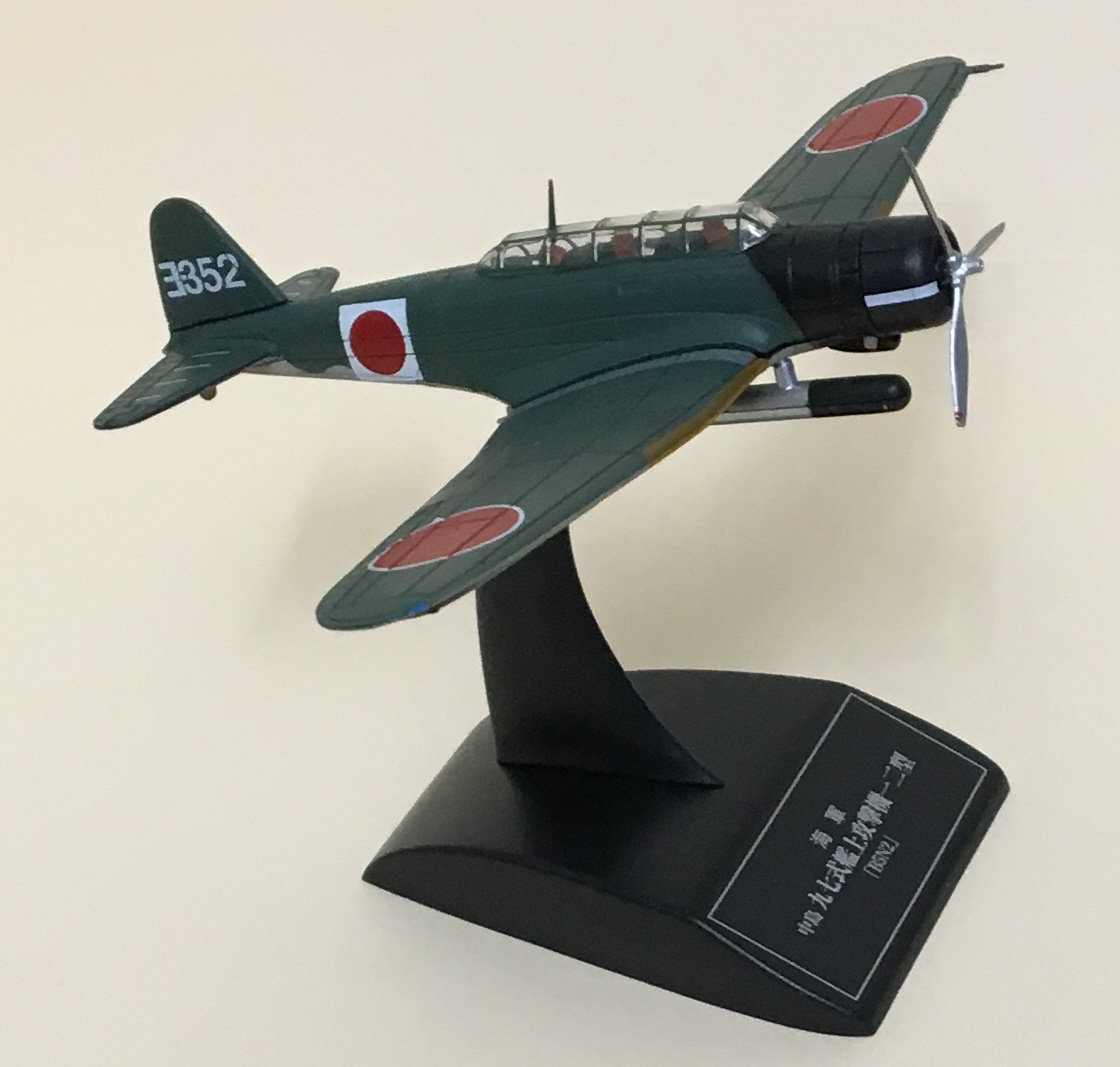FACTOIDS & TRIVIA
The Nakajima B5N Type 97 (allied
code name "Kate") was the main torpedo bomber used by the Imperial
Japanese Navy during World War II. It was developed as a
carrier-based aircraft (folding wings!) in 1937 and was used in the
first Sino-Japanese War. Though it was obsolete by 1941, the IJN
continued to use the B5N, both land-based and carrier-based, because of
production delays for its replacement. So, as usual, the B5N was
improved with a more powerful engine resulting in the B5N2 shown here
that was used from 1941-45. This version was actually a much better
torpedo bomber than the Allied torpedo bombers (plus the Japanese
torpedoes were also far superior). The B5N could even carry bombs
instead of a torpedo. This aircraft was responsible for sinking the
Battleship Arizona at Pearl Harbor in addition to helping sink the
aircraft carriers Hornet and Lexington. As the war came
to a close, many B5Ns were used for kamikaze missions. Nakajima
produced a total of 1,149 B5Ns. Here's a short video
(not mine) of a B5N bombing run in War Thunder, an online game that is
many times more realistic than the ancient Combat Flight Simulator that
I use.
NAKAJIMA
B5N2 Type 97 "Kate"

Class: Torpedo Bomber
Crew: 3
Engine: Nakajima Sakae 11
14-cylinder, twin row radial (1,100 hp)
Max Speed: 235 mph at 11,811 ft
Climb Rate: 1,280 ft/min
Service Ceiling: 27,100 ft
Range:
608 miles
Armament: 1 x .303 inch machine gun
(flexible mount rear-firing)
1 x 1,760
lb torpedo or 1,760 lb bombload
Model Scale:
1:100
Back
to the Japanese
Combat Aircraft of WWII
Menu

